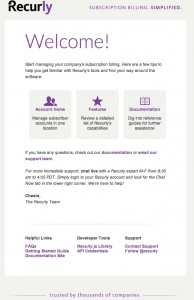
You’ve recruited the right employees and you’re ready to make an offer. Other than salary, what else are you including in the compensation package? How a company structures its benefits package can make a positive impact on its ability to retain great employees.
The typical benefits package for most U.S. companies includes paid time off, year-end or performance bonuses, health insurance, a retirement plan, and occasionally specialty benefits such as disability and life insurance, as well as dental and vision coverage. Other employee perks that many companies offer include flexible work hours, transportation reimbursements, wellness, continuing education, or discounts on company products or services—the list goes on.
With so many companies advertising fancy perks in the media—Twitter offers three catered meals a day, while Airbnb offers a $ 2,000 annual travel stipend—it’s tempting to go big on your benefits package. However, business owners need to find a balance: offer enough to make employees feel valued and appreciated, but without taking on a major financial burden, especially if you plan on growing this company for the long term.
When building the benefits package for your company, here are some tips to think about:
Get the basics right first.
Any standard employee benefits, such as sick leave, maternity leave, and health insurance, will need to meet basic federal, state, and local requirements. Considering working with a compliance specialist to make sure that you haven’t overlooked anything, such as paid maternity or sick leave requirements from your state.
You’ll want to work closely with your finance team, HR team, and insurance agent or broker to put together a plan that is not only affordable for your company but will also give you room to grow. Keep in mind that it’s much easier to add benefits later than it is to take away. For example, if your company is in its early years and perhaps can’t afford to pay for a 401k plan as of yet, you can still provide employees with access to a self-funded 401k plan as an incentive to save, then add employee-matching contributions later down the line as your company grows.
Listen to your employees.
Use employee feedback to improve your benefits package annually. You won’t know you’re your employees value most unless you ask, so run surveys, crowdsource ideas, or even just hold one-on-one conversations with them to get a sense of what they appreciate most about their benefits. Some questions to ask:
- What types of employee benefits are most important to you?
- If you could choose one new type of employee benefit, what would it be?
- If you were given X dollars for employee benefits, how would you spend them?
You can also individualize your employee benefits through a “cafeteria plan,” which allows employees more choice over what they want to receive as benefits. Typically the employer sets an amount of pre-tax salary that the employee can use on the plan, which the employee can then elect to take as cash (making it taxable) or use it to fund an annual reimbursement account that can be used on qualified benefits, including health and disability insurance, dependent care benefits (like childcare), out-of-pocket medical expenses via health savings accounts, and retirement plans. For example, a young employee may choose to spend their plan on a 401k, while an older employee with a family may elect to cover a more comprehensive health insurance plan and childcare expenses.
Educate employees on how to maximize their benefits.
Many benefits plans are undervalued by employees simply because they aren’t well-communicated. In other words, if they don’t know how their health insurance or 401k works, how can they see it as a benefit? Dedicate time during the workday to educating your employees about their benefits and providing resources for them to learn more. This adds incredible value to your existing benefits with little to no cost and shows employees that you care.
Companies don’t even have to do the educating themselves. If you offer health insurance, for example, invite your agent or broker in to give a presentation on what the company health plans include, what additional coverage might be available, and how to handle administrative tasks like filing claims. To help employees better understand the landscape of retirement, you could invite a financial advisor in to speak on the retirement plans available. Many of these people are usually willing to do it for free—after all, the broker or advisor may see this as a way to tap into a future customer base.
Look for perks with high value, low cost.
When it comes to perks, they don’t have to be expensive to be appreciated by your staff. Whether it’s flexible hours or paid volunteer time, monthly transit cards or wellness reimbursements, a thoughtful perk can go a long way in showing employees they are highly valued and respected by the staff. Perks should fit the company culture and values—for example, Patagonia famously encourages their employees to get outdoors and be active, posting the daily wave report for surfers who want to catch a wave during their afternoon break.
Most companies aren’t conveniently located next to a beach, but you can still apply the same attitude to employee well-being at your own company without having to spend on lavish perks. Google, although known for its gourmet cafeterias and massage rooms, does something easy and cost-free with its team members: One Simple Thing. Employees are encouraged to set one major non-work goal, such as “I will work out three times a week” or “I will disconnect on a one-week vacation this quarter,” which are then shared with managers and coworkers. Together with everyone’s shared goals, the team helps to keep each other accountable and encourage one another to work toward that goal.
Last but not least, companies should also consider offering a benefit that can ultimately pay dividends back to the company: education and training. Offer to pay for or reimburse employees for any online courses, classes, or certification programs related to their job training, especially if it is in preparation for becoming a manager. Not only do employees learn new skills, but it makes it easier for companies to promote from within rather than spending time and money recruiting for advanced positions.
Originally published here.
Business & Finance Articles on Business 2 Community
(37)





